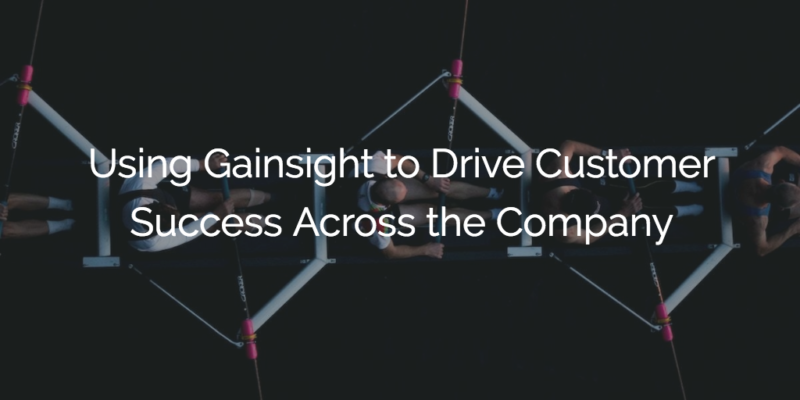The Meeting
Every now and then you have a meeting call that reshapes your world view. This past June on a Tuesday evening in Washington, D.C., I had one of those meetings.

I was at an investor-hosted healthcare CEO event and had a chance to meet dozens of CEOs whose companies are changing the world in the complex, ever-evolving healthcare space.
I happened to meet the CEO of a Gainsight client. Here’s the direct interaction:
CEO: “We use your product and are happy clients.”
Me: “Thanks!”
CEO: “Have you thought about selling to teams who are trying to proactively drive success for clients?”
Me: …
CEO: “Right now you work with [client name]. Her job is just to handle customers when they churn and try to convince them to stay.”
Me: “That’s interesting—her title is VP Customer Success.”
CEO: “Yeah that’s probably a misnomer.”
The CEO went on to tell me that he wants to drive Customer Success across the company—in Marketing, Sales, Onboarding—literally even in the way they do Accounts Receivable collections. This was one of many conversations that inspired me to write this post about CEOs taking ownership of Customer Success.
The Problem
It’s clear we have a fundamental cognitive disconnect in the way we talk about Customer Success.
In the same breath we say:
- “Customer Success is a company-wide priority.”
- “My job is I’m a Customer Success Manager and I drive success for my clients.”
Many Customer Success leaders to whom I speak with struggle with the following reality:
- The title of the overall group running post-sales is now “SVP Customer Success” or something similar.
- One function in the team is “Customer Success Management.”
- Other functions include Services, Training, and Support.
- So the boss has a title that encompasses only one of her organizations.
I started a popular LinkedIn thread on this specific topic.
This reminds me of my first job where I started as a Product “Manager,” yet I wasn’t managing anyone. Then I got promoted and became a “Manager, Product Management” and managed “managers” that didn’t manage anyone. Title mania!

I digress… The problem is we have taken a critical company-wide strategy (Customer Success) and branded it to be the sole job of one department (CSM). And that doesn’t work for anyone. Customers don’t get the true “Customer Success” that the industry promises—and CSMs feel like they’re always failing, with the weight of the world on their shoulders. Meanwhile, the CSM team’s colleagues in other functions often feel like the CSM team is a “silo.”
The Opportunity
As a software vendor, you get to see the myriad ways companies work evidenced in the way with which they use your software. At Gainsight, we’ve learned that there is a better way to drive Customer Success cross-functionally, and many of you are already doing it.
Our best customers are using Gainsight as a rallying function to get everyone aligned around Customer Success.
I think everyone realizes that Customer Success naturally goes across the whole lifecycle:
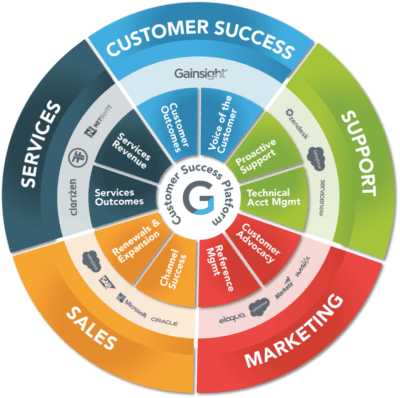
Obviously, this is easier said than done. The reality is that change management is the hardest task in existing companies, but we’ve learned the secret.
I believe you need to adapt to the natural paradigm of each department. Some departments by definition have paradigms that are constructed around customers (e.g., Customer Success Management). Others have a different center of gravity:
- Product Management: Releases, features, R&D
- Marketing: Leads, events, communications
- Sales: Opportunities
- Support: Cases
- Professional Services: Projects
- Accounts Receivable: Invoices
To me, the key to driving Customer Success across the company is to define the jobs where there is natural orientation around Customer Success and the roles where you need to inject Customer Success into the existing way people work. This document is about the latter. And there’s no better way to illustrate exactly how to do it than to hear from functional leaders who have already injected Customer Success into their organizations here at Gainsight.
Product and Customer Success
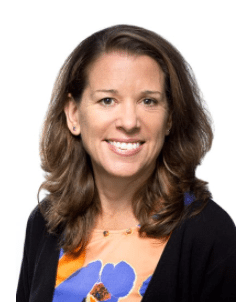
Denise Stokowski VP Product Management and Security
In Product Management, we are not successful until the product we design, build, and ship actually gets used by our customers. Some of the key ways we use Gainsight in our Product team are:
- Managing our Product Risk process in collaboration with our Client Outcomes team.
- Measuring feature usage and adoption across our customer base to guide our prioritization and roadmap discussions.
- Connecting with our customers to have meaningful product discussions.
Product Risk Management
One of our key cross-functional processes is the management of Product Risks. In the world of Customer Success, we know if a product gap creates a barrier to the customer getting the value or outcomes they bought our product to meet—we have a big risk with the customer. At Gainsight, our Client Outcomes team occasionally identifies an enhancement request from our customers that needs special attention. To do that, they create a Product Risk CTA (Call to Action) and assign it to me. I always have my Gainsight notifications turned on, so I immediately know when someone has entered a new risk. Once triaged, I assign ownership of the CTA to the appropriate member of our team. We provide updates and expected delivery dates using those CTAs as well as Timeline. This way our customer-facing teams understand when and how we will bridge the gap. (I covered the details of our Product Risk Management process in these webinars if you want to learn more).
Feature Usage and Adoption
Every Product team has a dashboard of customer usage for their feature area. One of the areas I cover is MDA (Matrix Data Architecture) Data Management and Connectors. I can quickly open my dashboard to see the top customers using MDA—storage, number of objects, and who is using which connector.
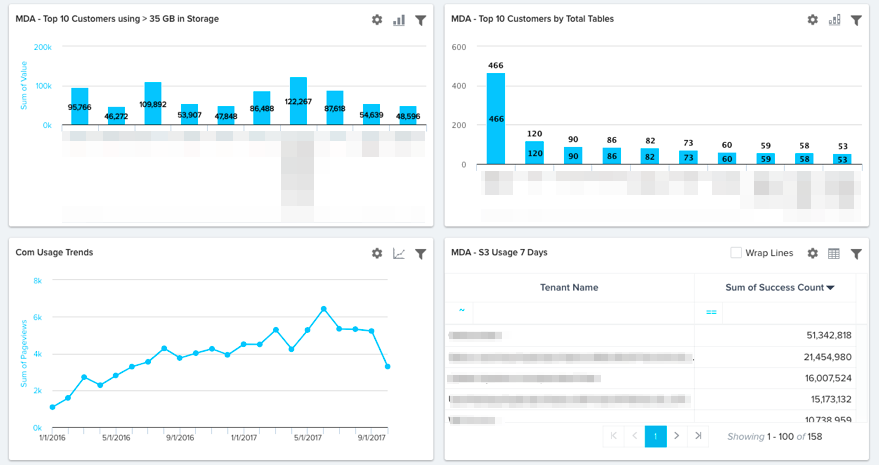
We leverage Gainsight to see how well a new feature it is being adopted. We also partner with our Client Outcomes team here to set metrics to track in Gainsight for driving this new adoption with customers. That way, both teams can measure our success in this area through Gainsight. Recently, we have been pretty excited about Timeline. We used our Gainsight data to show how Timeline is driving faster adoption, healthier customers, and improved end user NPS. This is a major motivator for us to double-down on that feature area!
Customer Conversations about Product
Our Product team loves to connect with our customers, and we take every opportunity to do exactly that. We use Gainsight Advanced Outreaches to invite and communicate before and after an advisory board meeting. We use Gainsight Surveys to run our Product Survey. We use Timeline to record the notes from our one-on-one conversations and share the links broadly with our Engineering teams. We collaborate with Sales and Client Outcomes teams on customers to understand new use cases and share our product roadmap. I always reference the C360 before meeting with a customer—our features scorecard is really helpful for me to identify specific opportunities to get feedback on a customer call.
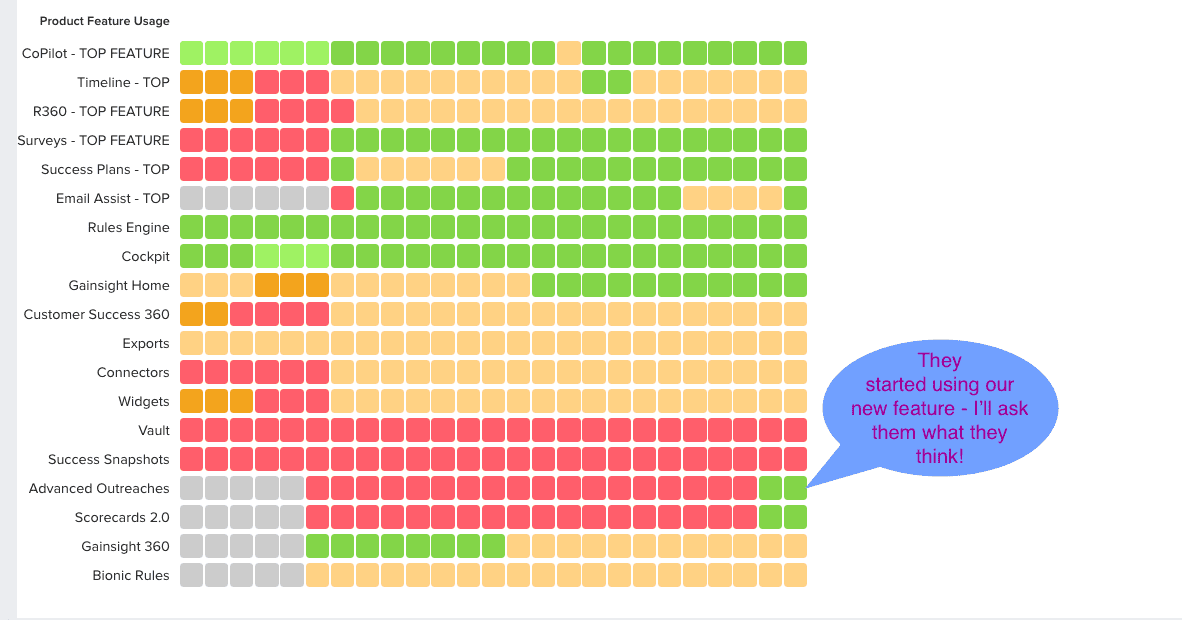
Customer Marketing and Customer Success

Will Robins Business Operations Lead and Head of Customer Marketing
I was the original member of our Business Operations team and had the privilege of setting up our own internal Gainsight instance.
During my time as a Gainsight Admin, I saw tons of opportunity to multiply the value of advocacy using Gainsight. So when we re-launched Customer Marketing a year ago, I was excited to step up and take it to the next level. My mission was three-fold. I wanted to add value for:
- Sales and Marketing → Make it easy to incorporate customers and their voice into Sales and Marketing activities. Also, design and build the Gainsight for Customer Marketing use case.
- Customers → Facilitate networking, knowledge sharing, and provide a platform for customers to be showcased in front of their peers. Also, ensure customers see value from advocating and don’t get fatigued.
- Customer Success Managers → Automate advocacy workflows, align them to the customer journey, and track the value of advocacy. This makes it easy for CSMs and ensures they’re properly credited with the value that advocacy adds.
Over the course of the past year, we’ve been able to make some tremendous progress on this mission.
- Sales and Marketing → We reduced the time to get a reference from a week to a day, coordinated hundreds of references that have influenced many millions in pipeline, and armed Sales and Marketing with compelling case studies, testimonials, and speakers.
- Customers → We launched the Gainsight Networking Program to help connect customers and match them based on their interests. We coordinated dozens of customer showcases and awards at Pulse, and built internal systems to ensure we weren’t fatiguing advocates.
- Customer Success Managers → We’ve quadrupled the amount of advocacy being done by customers while reducing the workload that advocacy puts on our CSMs. We’ve operationalized customer advocacy to 4x the volume of advocacy events being done by customers over the course of a year.
To share the strategies that contributed to this success, I wrote up a detailed Guide to Customer Marketing where I discuss how we use Gainsight to operationalize the advocacy activities like:
- Finding advocates using NPS surveys
- Surveying customers to capture low-touch case studies en masse
- Sharing scoring data with sales so they only use “healthy” references
- Streamlining the workflow for reference requests
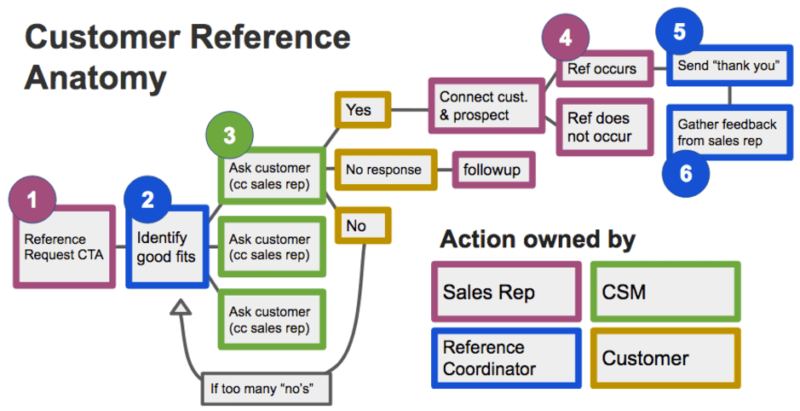
- Tracking the impact of Customer Marketing on pipeline using Dashboards
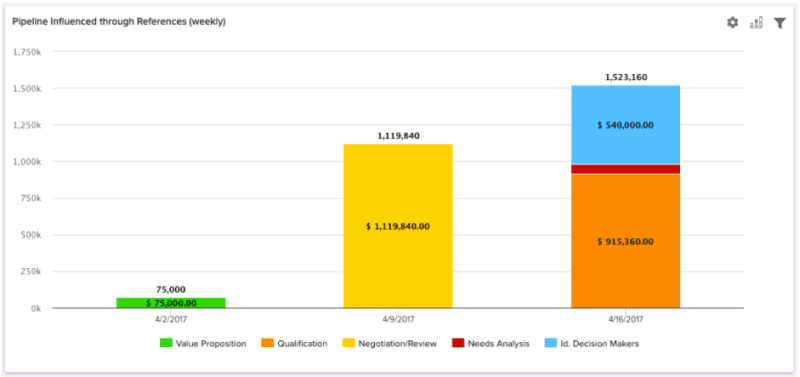
- Automatically suggesting references for an account using NameDrop
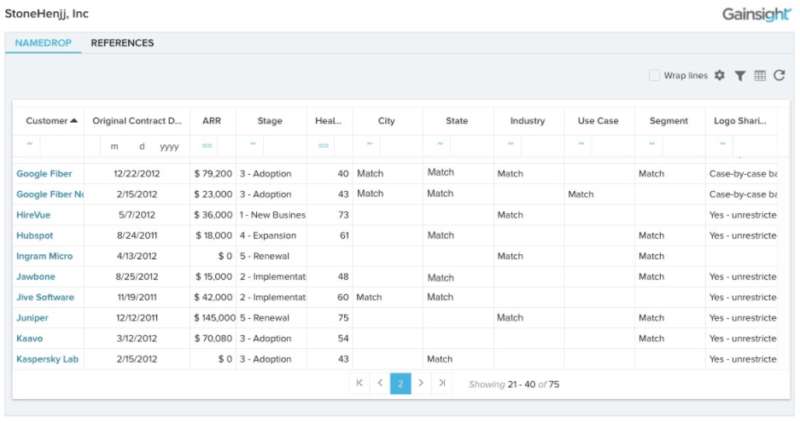
With Gainsight and these best practices, we have our Customer Success team, Marketing team, and Sales team rallying around customer advocates to drive growth. Cool stuff!
Onboarding/Professional Services and Customer Success

Saood Shah VP Professional Services
In my experience, Services Leaders often still approach Services with a “legacy” mindset that was developed during the era of the big sale followed by the big upfront implementation followed by radio silence. While this approach ensured that the Services Business met its internal targets, it often failed to make the customer successful over the long-term.
Today, there are two big shifts I incorporate into my approach to Services:
- Execute new types of agile service offerings that give customers the experience they want. Examples include: Standardized Onboarding, Managed Services (Like a Technical Account Manager or Admin-on-Demand), and bundles of Hours for technical assistance.
- Approach more traditional service offerings with a customer mindset. No longer is it sufficient to measure the success of a project by its ability to finish on-time and on-budget. Projects need to be measured by the outcomes and impact it has for the customer.
While my team uses separate tools to manage lengthy implementation projects and FinancialForce to run project financials, we use Gainsight to augment those functions and ensure we stay aligned to our customers:
- Handoff Objectives from Team to Team: We start capturing objectives early in the customer lifecycle. Our Sales team populates a Success Plan with the main objectives a customer has for their partnership with Gainsight. (A key part of this is capturing all of a customer’s objectives, not just the ones they bought product and services for right now. This allows us to understand that even if we fully complete our onboarding plan, there’s still more a customer wants from Gainsight.) Then we use this Success Plan and a Handoff CTA to transfer the customer from Sales to Services and Services to CSM with no loss of knowledge.
- Automate Predictable Touchpoints: We also use Advanced Outreaches to automate the predictable touchpoints in a customer’s journey with Services, and can scale the automation up or down depending on the customer segment and the services purchased. For example, for our highest-touch customers, we automatically send a Welcome Email with key introductory information (like name and contact info for their Project Manager) and for lower-touch customers, we send a Welcome Email followed by a series of emails to guide them through the completion of their “Pre-work” (steps they are required to complete before beginning onboarding). And we always send a Survey to measure CSAT as soon as the project closes (we’ll come back to this later).
- Risk & Escalation Management: Gainsight acts as a great layer on top of our Professional Services Automation (PSA), FinancialForce. We’re able to analyze our FinancialForce project data and proactively identify risks such as “Trending Over Budget,” “Increasing Scope,” and “Negative Sentiment.” When the alert is created, it comes with a playbook that guides the Project Manager through the best practice process to address the risk. Alerts can also be manually created by the team so we can manage an end-to-end risk and escalation management program in one place.
- Track Early Results of Onboarding: We measure both the health of the project (such as Timeline, Scope, CSAT, Data Quality) and the early impact on the customer’s adoption of Gainsight. While our thresholds for “healthy” are different than our CSM counterparts, we know that we should see early indicators of adoption, and that those indicators are correlated to long-term health. For example, we look for consistent logins and page views of certain key features.
- Measure the Experience: One of my favorite parts of Gainsight is the Survey tool and the control it gives my team to measure the Services experience. We have full control over what the survey says, who it goes to, and when it is sent. Now we have visibility of the customer sentiment going into, during, and after the completion of service. Then we can analyze it in Gainsight’s Dashboards to dissect sentiment by customer segment, project phase, project role, resources on the project, and reason for dissatisfaction—giving us the ability to continuously improve our offerings.
Training and Customer Success

Dave Derington Manager, Education Services
In many ways, Education tends to be one of the last things you think of when building your Customer Success team. When you’re a small organization, nearly everyone takes a hand at sharing knowledge. For example, your implementation team may get on weekly calls to guide customers through setup and configuration. Product Marketing gives frequent webinars. CSMs themselves are often called upon at touchpoints to help explain a feature or answer a question. Your Support team may also be burdened with ad hoc training where there are gaps.
As we’ve matured our program, we’ve naturally leveraged Gainsight. We view Customer Education as an implicit part of Customer Success. Educational Services are just that: Services. Data from a Learning Management System (LMS) or other learning technology is Usage Data! As such, if you have an integration with your LMS like we do, you can start asking questions about the learning process.
Today we have optics on how well we’re doing as Educators.
- NPS-style Surveys for Courses → Each course has an associated NPS-style survey that’s sent upon completion, giving us valuable insight as to how well that course is doing.
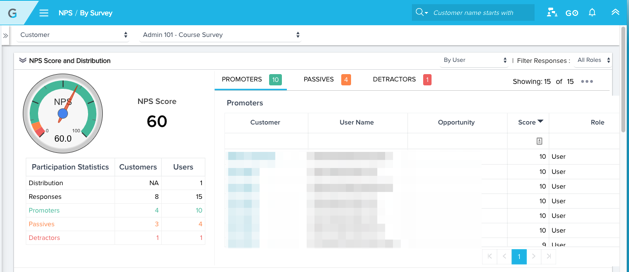
- Reports and Dashboards on Training Programs → Anyone in our organization has information at their fingertips. A CSM, for example, who may be investigating why an organization is having low product adoption can quickly report on who has (and hasn’t) reviewed training!

- Internal Enablement → Another driver in helping your customers succeed is knowing that your own CS team is well trained. As with customer-centric reports, our team also can easily review what the in-house team has trained upon—even knowing how well they have performed on tests.
But of course we’re not stopping there! As we continue to grow, our aim is to use Gainsight in its fullest sense by building our Educational Process directly into our tool.

Examples include:
- Automating the delivery of Education Packages via Onboarding (see image above)
- Correlating the impact of Education on Adoption (Reports and Dashboards)
- Augmenting the customer’s Health Score to include Metrics for Training (see image below)
- Calculating how Education can affect overall Time-to-Value (TtV)
- And much, much more!
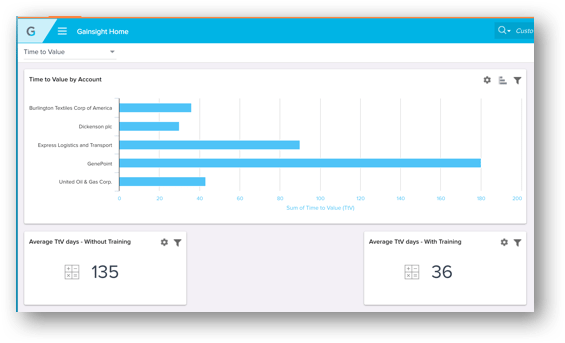
Knowledge is power, and education is a driver for not only onboarding, but also continued adoption of your product. Using Gainsight for Education is a natural fit!
Support and Customer Success

Emily McDaniel Senior Director of Technical Success
When I joined Gainsight four years ago, I was given the keys to build our Support organization from the ground up. At the time, we had a Services team that was implementing customers and a Customer Success team that was driving outcomes for our customers. Support was brought into the picture to provide an avenue for customers to quickly get their questions answered, opening up more time for Services and Customer Success to focus on the bigger picture.
My team uses Zendesk for day-to-day ticket management, but we utilize Gainsight to compliment our processes and to collaborate with other teams cross-functionally.
- View health data: From a management perspective, the team uses Reports and Dashboards to identify customers who are actively engaged with Support using Health Scores so that we can determine where we might need to invest more time or resources.
- Prioritize: We’re able to layer key milestones like renewal date and data, like size of customer with volume of tickets, in order to ensure we’re correctly prioritizing tickets.

- Proactive Alerts for CSMs: Our CSM team does not need to know about every support ticket that is entered in real time, but they do want to stay ahead when it comes to certain levels or types of activity on key accounts or at key times during the lifecycle of the account. We’re able to create rules to trigger alerts for CSMs so they’re aware of this.
- Risk and Escalation Management: Gainsight uses Zendesk data to analyze ticket trends and identify risks when a customer has a high priority ticket that has been open for too long, has opened more than five tickets in a week, or has a ticket that is more than 21 days old. When an alert is triggered, it includes a Playbook which guides the manager on the steps they need to take in order to successfully close out the risk. Because these risks are stored on the customer record, anybody who has an upcoming interaction with the customer will be aware of what is going on with Support. In addition, Support collaborates with our Product team through alerts when we’ve identified a customer who is in a risky situation due to a product gap.
- Information is Power: Our entire team uses the Gainsight App for Zendesk. With this view, a Support analyst can see all key customer data from the ticket view in Zendesk without ever having to navigate away from the ticket.
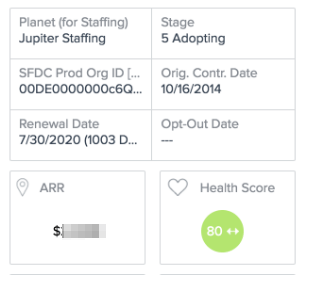
Sales and Customer Success
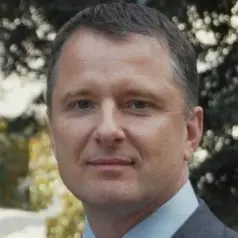
Jason Stewart Chief Revenue Officer
Revenue. It’s the bottom line of our business—your business, any business—and it’s the bottom line of my job. That’s why I’m inside the Gainsight application every day; it’s critical to meeting the revenue goals of our company. Here’s how Revenue leaders should be thinking about using technology to optimize processes.
- Pre-sales Outcomes Capture: Even though new Annual Recurring Revenue (ARR) is where I focus most of my efforts, we know that we don’t start to maximize that ARR until year two and beyond. So for every new deal we close, we need a plan in place for long-term success. During the pre-sales cycle, our team is already using Success Plans in tandem with the CSM to ensure a seamless handoff when the deal closes.
- Renewals: Here’s a figure I pulled from Gainsight I use to forecast our renewals by segment and by Customer Account Manager. As you can see below, I’m looking at a chart of our customers’ health by days until renewal. This allows us to better predict future revenue based on expected renewals at a glance. It also helps me know how my team is doing at any given time.

- Expansion: Here’s our pipeline forecast for upsell by Sales rep. Gainsight’s deep insights into customer health and sentiment lets us accurately predict expansion at a granular level. It helps me set quotas, variable compensation, spiffs, and more.

- NameDrop: This might be the greatest asset on a deal-by-deal basis that Gainsight offers Sales and Revenue teams. If you subscribe to the idea that your successful customers are your greatest asset in sales (and I wholeheartedly do!), you still have an operational problem when it comes to knowing who to leverage in a given sales cycle. NameDrop solves that. NameDrop helps us close deals faster by surfacing referenceable successful customers with the same industry, stage, use case, region, stage, or ARR as a prospect. It’s been integral in closing multiple deals here at Gainsight.
Executives and Customer Success

Rena Wang Chief of Staff
One of my responsibilities as Chief of Staff is to manage and facilitate our executive relationship management programs. In doing so, I’ve leveraged a number of Gainsight features to streamline ways for executives to effectively utilize their most precious resource—time.
Executives want to be able to understand their business at the highest level and in real-time without sacrificing the customization and nuance that can spell the difference between a healthy and an unhealthy customer.
If you’re an executive, Gainsight can clarify your understanding of your business and amplify your decision-making through regular usage of the product features I highlight below:
Cockpit Risk View

As an executive, managing escalations is a regular part of life. With an Executive Cockpit View, you can clearly see which key risks have been escalated to your level. It’s easy to see the full risk history, steps taken so far, and any specific action requested of you.
Sally, the Gainsight chatbot
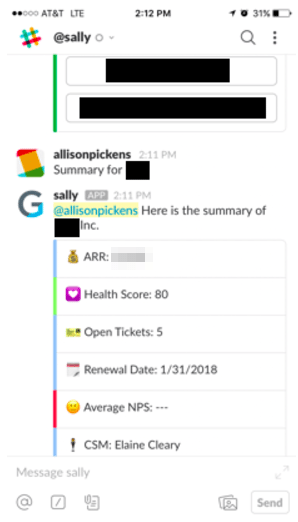
Executives are always on the go and need relevant, accurate, and easily accessible information—stat. Our executives, including Nick Mehta (CEO) and Allison Pickens (CCO), love using Sally. Sally is the Gainsight chatbot that lives inside the Slack mobile app. Sally preps them for onsite client meetings, tells them who the CSM is for the account, provides the health score for the client, and shows them detailed notes from previous client meetings. To learn more, check out Allison’s post on Sally here.
Executive Sponsor Program

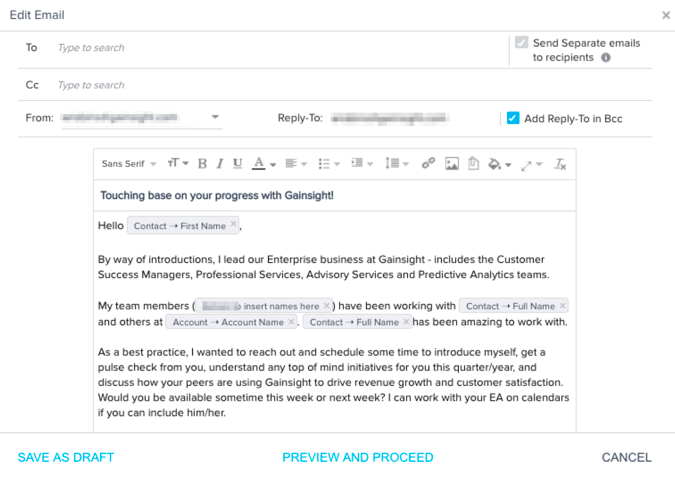
Executives here at Gainsight care about each and every customer—and enterprise customers certainly benefit when there is an executive who regularly touches base with them. We do our best to have an executive check-in with our key clients on a quarterly basis. Between juggling calendars, email drafts, and other responsibilities, operationalizing executive outreach and regular communication has traditionally been a challenge. Fortunately, Gainsight allows for executives to operationalize their high-touch outreach in a scalable manner via CTAs and Email Assist. Custom CTAs ping the executives on a predetermined cadence, and Email Assist helps them reach out to customers in a quick and timely fashion!
Site visits
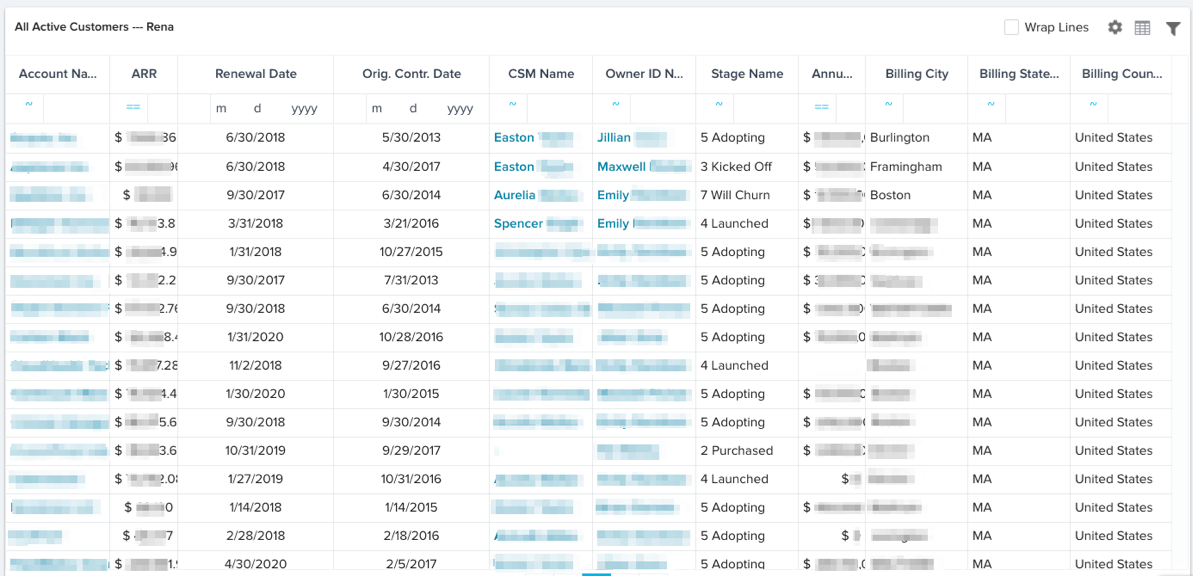
Gainsight customer dashboards are an easy way to figure out priorities and scheduling for upcoming trips. When our executives are going on a trip to another city or state, usually “anchored” by one particular engagement, I leverage Gainsight to filter for customers by location, renewal date, stage, and more. This way, our executives’ trips are as productive and timely as can be.
Other useful Gainsight dashboards
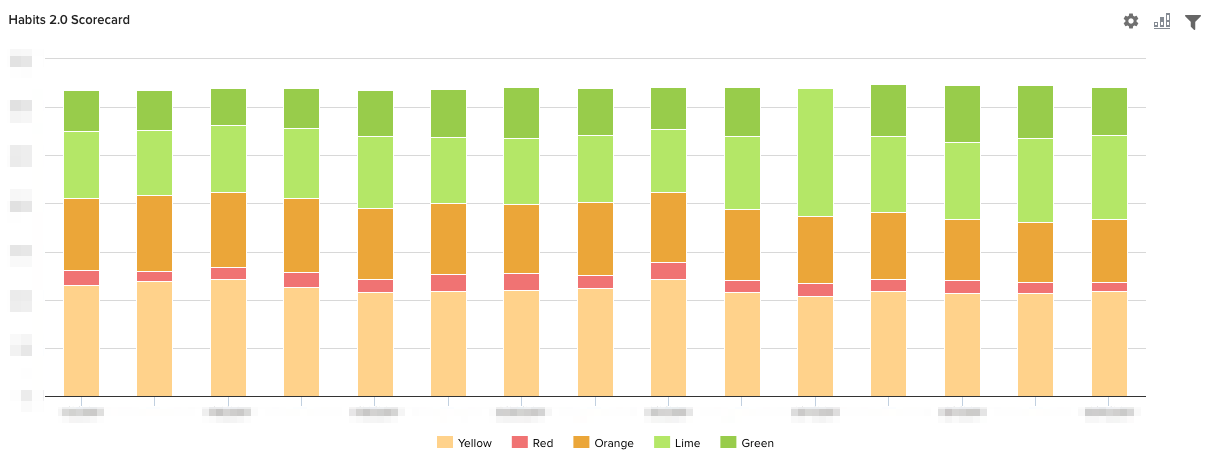
There are many more dashboards within Gainsight that our executives check on a frequent basis. In this instance, they’re able to get a holistic view of the business over time by examining the cross-section of Health Scores across our customers for Habits (our health measure that tracks sticky adoption).

The same is true for NPS!
If you’re an executive, Gainsight will make your decision-making more keen and empower you apply your time where it matters most.
See how Gainsight can make your function more customer-centric
As you can see, our team is all-in on building a deep, analytical focus on Customer Success into every single function—not just the ones you traditionally associate with the Gainsight “brand.” As I said earlier, these aren’t hypothetical or even purely internal use cases; our customers are leveraging the tool right now in these specific ways and many more.
If you’re curious about how Gainsight can help transform your organization around customer outcomes, I highly encourage you to get a hands-on demo of the tool for your use case. Click here to sign up for a demonstration.
